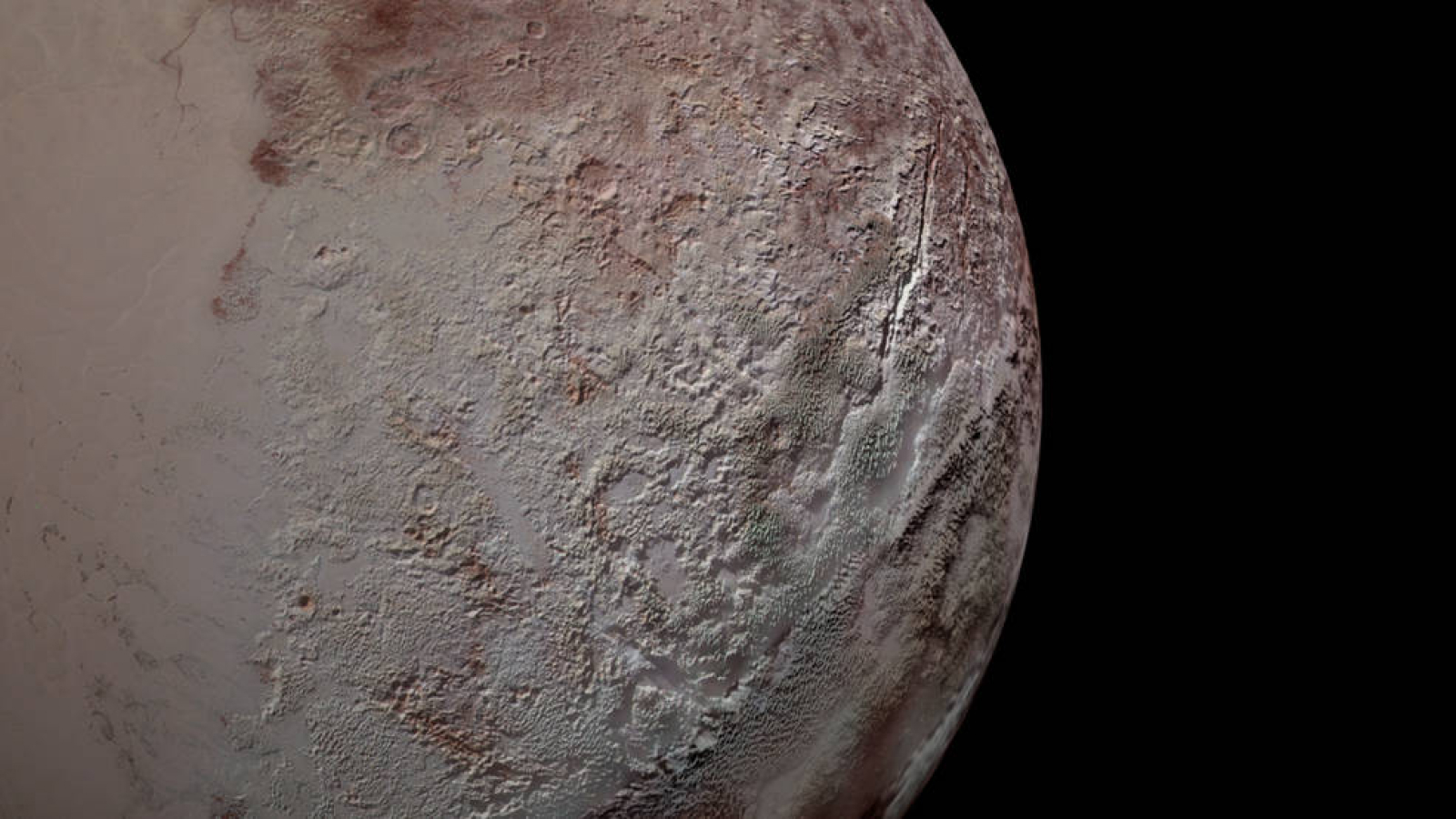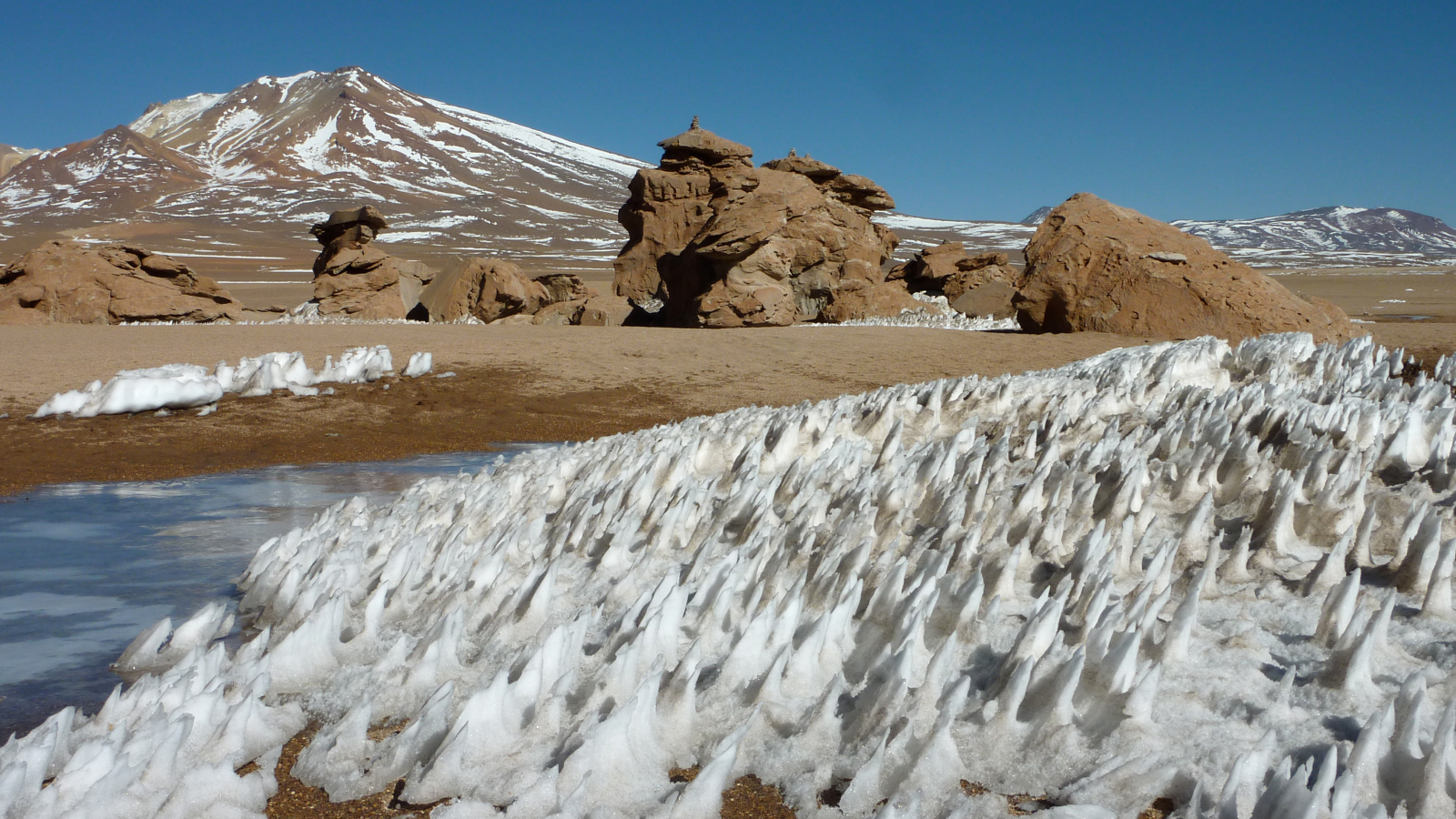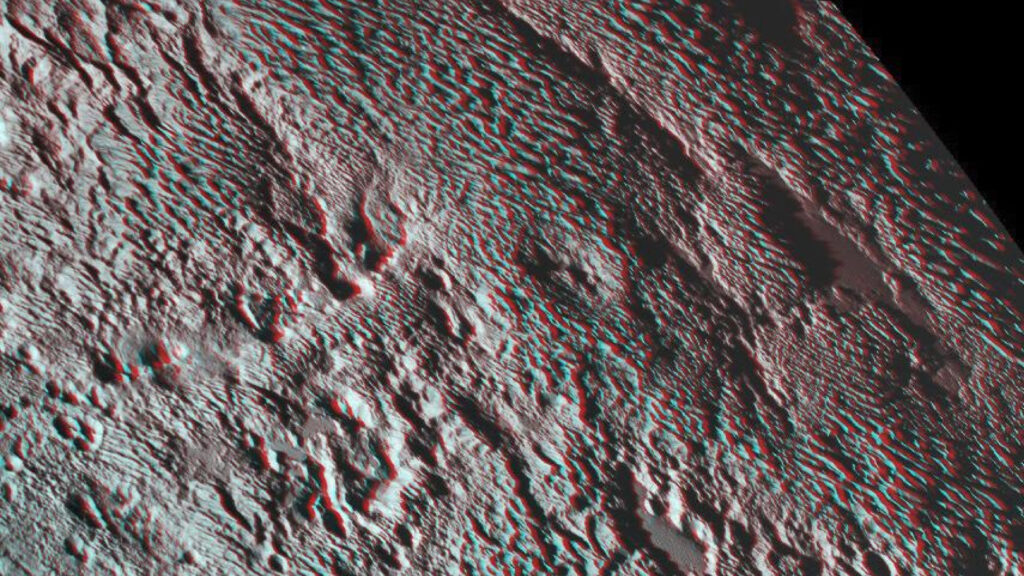Skyscraper-size spires of mehtane ice may cover around 60% of Pluto‘s equatorial region — a larger area than scientists previously estimated, new research finds.
The study, published July 5 in the Journal of Geophysical Research: Planets, was based on data collected by NASA’s New Horizons spacecraft, which captured the first close-up images of the tiny world a decade ago, on July 14, 2015.
During that flyby, the spacecraft spotted spires of methane ice, each about 1,000 feet (300 meters) tall — about as tall as the Eiffel Tower. They’re separated by up to 4.4 miles (7 kilometers) in somewhat parallel rows to form a geological feature astronomers call “bladed terrain.”
The spires were spotted in high-altitude regions along the dwarf planet’s equator in the Tartarus Dorsa region, a mountainous stretch just east of Pluto’s famous heart-shaped Tombaugh Regio.
The features appear to be a larger but more spaced-out version of Earth’s penitentes — structures of water ice that form in high altitude regions, such as the Andes, and reach a maximum of 9 feet (3 m). Similar structures have also been seen on Jupiter’s moon Europa and may exist on Mars.
Related: Pluto may have an ice-spewing ‘supervolcano’ the size of Yellowstone, New Horizons data reveals
New Horizons was only able to snap high-resolution images of the bladed terrain on the side of Pluto that faced the probe — the encounter hemisphere — during its flyby. But additional data collected at infrared frequencies hinted that most of the dwarf planet’s equatorial region, even on the non-encounter hemisphere, was methane-rich. This suggested that the spires are there, too.

However, photos of Pluto’s non-encounter hemisphere are too fuzzy to directly spot spires. One way to detect them, though, is to use “indirect clues in the images,” Ishan Mishra, a postdoctoral fellow at the Jet Propulsion Laboratory in Pasadena, California, and the new study’s first author, told Live Science in an email.
These indirect clues, Mishra said, include surface roughness — irregularities, including slopes or ridges such as Pluto’s spires — that were detected on scales too small for spacecraft cameras to resolve. He noted that rougher surfaces appear darker than smoother ones under the same lighting conditions because irregularities create shadows. That means rough, blade-covered surfaces would produce a detectable “darkening” trend, even if it were impossible to identify the icy spikes directly.
Following this reasoning, the study’s authors analyzed photos of Pluto in which light had been reflected from the surface at many different angles. Using this reflectance data, the researchers studied how Pluto’s surface brightness varied depending on the viewing angle. They focused on six specific regions, including the bladed terrain that the spacecraft had spotted on the encounter hemisphere and the hypothesized bladed terrain on the dwarf planet’s other side. Using a mathematical model, the team then calculated how the surface brightness varied with roughness.

The astronomers found that, despite great variation in each region, the dark side’s methane-rich regions were very rough — on average, twice as rough as the bladed terrain in the encounter hemisphere.
The results imply that bladed terrain of ice spires exists in a band spanning about 60% of the planet’s circumference — equivalent to five times the width of the continental United States — with a majority located on the non-encounter hemisphere. But it isn’t clear if the band is continuous or patchy, Mishra told Live Science.
The band extends between 30 degrees north and south of Pluto’s equator, where the climatic conditions seem just right for the spikes to form, Mishra explained. “The formation of bladed terrain depends on long-term cycles of methane condensation and sublimation, which are governed by Pluto’s seasons and orbital variations,” he said.
Direct evidence will be needed to confirm the new observations. The most definitive way to confirm the bladed terrain’s extension into Pluto’s dark side is a future spacecraft mission, Mishra said. “Until then, studies like ours offer the best indirect evidence using the available data.”
